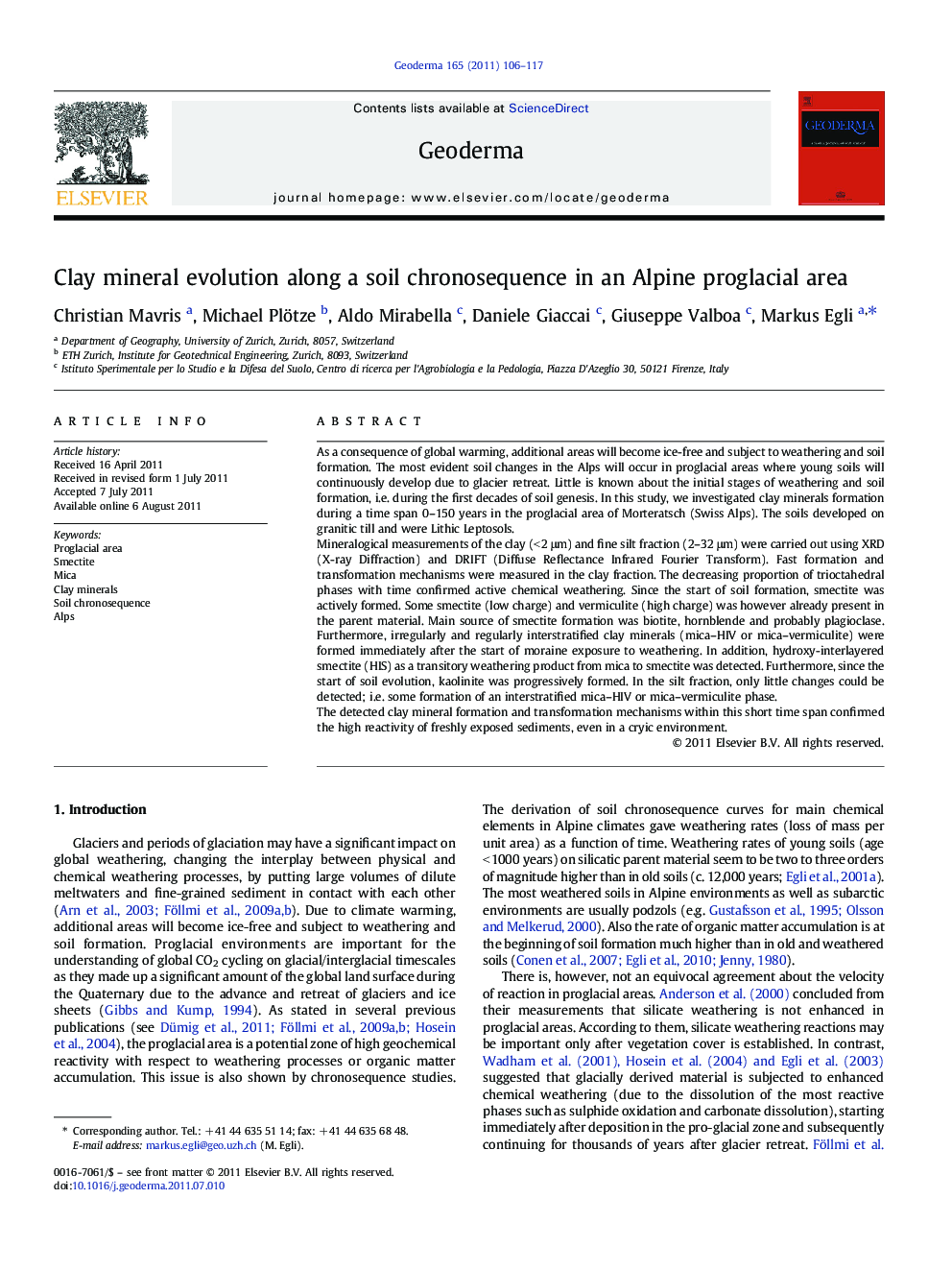| کد مقاله | کد نشریه | سال انتشار | مقاله انگلیسی | نسخه تمام متن |
|---|---|---|---|---|
| 4574103 | 1332474 | 2011 | 12 صفحه PDF | دانلود رایگان |

As a consequence of global warming, additional areas will become ice-free and subject to weathering and soil formation. The most evident soil changes in the Alps will occur in proglacial areas where young soils will continuously develop due to glacier retreat. Little is known about the initial stages of weathering and soil formation, i.e. during the first decades of soil genesis. In this study, we investigated clay minerals formation during a time span 0–150 years in the proglacial area of Morteratsch (Swiss Alps). The soils developed on granitic till and were Lithic Leptosols.Mineralogical measurements of the clay (< 2 μm) and fine silt fraction (2–32 μm) were carried out using XRD (X-ray Diffraction) and DRIFT (Diffuse Reflectance Infrared Fourier Transform). Fast formation and transformation mechanisms were measured in the clay fraction. The decreasing proportion of trioctahedral phases with time confirmed active chemical weathering. Since the start of soil formation, smectite was actively formed. Some smectite (low charge) and vermiculite (high charge) was however already present in the parent material. Main source of smectite formation was biotite, hornblende and probably plagioclase. Furthermore, irregularly and regularly interstratified clay minerals (mica–HIV or mica–vermiculite) were formed immediately after the start of moraine exposure to weathering. In addition, hydroxy-interlayered smectite (HIS) as a transitory weathering product from mica to smectite was detected. Furthermore, since the start of soil evolution, kaolinite was progressively formed. In the silt fraction, only little changes could be detected; i.e. some formation of an interstratified mica–HIV or mica–vermiculite phase.The detected clay mineral formation and transformation mechanisms within this short time span confirmed the high reactivity of freshly exposed sediments, even in a cryic environment.
► Due to climate warming, young soils continuously develop in proglacial areas.
► Smectite, vermiculite and hydrobiotite formed within less than 150 years.
► Interstratified clay minerals were immediately formed.
► A decrease of trioctahedral phases was detectable along the proglacial area.
► The source of smectite formation was biotite, hornblende and plagioclase.
Journal: Geoderma - Volume 165, Issue 1, 15 October 2011, Pages 106–117